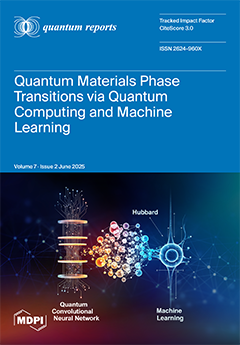Open AccessArticle
Towards a Multiqudit Quantum Processor Based on a 171Yb+ Ion String: Realizing Basic Quantum Algorithms
by
Ilia V. Zalivako, Anastasiia S. Nikolaeva, Alexander S. Borisenko, Andrei E. Korolkov, Pavel L. Sidorov, Kristina P. Galstyan, Nikita V. Semenin, Vasilii N. Smirnov, Mikhail A. Aksenov, Konstantin M. Makushin, Evgeniy O. Kiktenko, Aleksey K. Fedorov, Ilya A. Semerikov, Ksenia Yu. Khabarova and Nikolay N. Kolachevsky
Cited by 4 | Viewed by 3198
Abstract
We demonstrate a quantum processor based on a 3D linear Paul trap that uses
ions with eight individually controllable four-level qudits (ququarts), which is computationally equivalent to a sixteen-qubit quantum processor. The design of the developed ion trap provides high
[...] Read more.
We demonstrate a quantum processor based on a 3D linear Paul trap that uses
ions with eight individually controllable four-level qudits (ququarts), which is computationally equivalent to a sixteen-qubit quantum processor. The design of the developed ion trap provides high secular frequencies and a low heating rate, which, together with individual addressing and readout optical systems, allows executing quantum algorithms. In each of the eight ions, we use four electronic levels coupled by E2 optical transition at 435 nm for qudit encoding. We present the results of single- and two-qubit operations benchmarking and realizing basic quantum algorithms, including the Bernstein–Vazirani and Grover’s search algorithms as well as H
2 and LiH molecular simulations. Our results pave the way to scalable qudit-based quantum processors using trapped ions.
Full article
►▼
Show Figures





